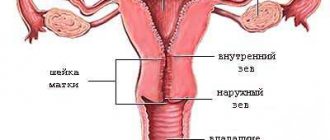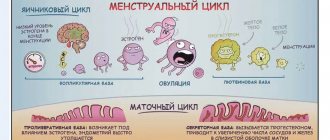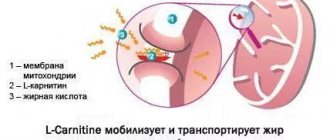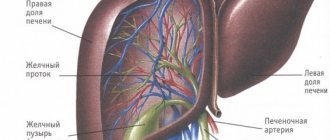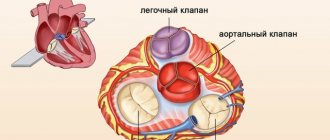The heart is a muscular pump that ensures continuous movement of blood through the vessels. Together, the heart and blood vessels make up the cardiovascular system. This system consists of the systemic and pulmonary circulation. From the left side of the heart, blood first moves through the aorta, then through large and small arteries, arterioles, and capillaries. In the capillaries, oxygen and other substances necessary for the body enter the organs and tissues, and from there carbon dioxide, metabolic products, are removed. After this, the blood turns from arterial to venous and again begins to move towards the heart. First along the venules, then through smaller and larger veins. Through the inferior and superior vena cava, blood again enters the heart, only this time into the right atrium. A large circle of blood circulation is formed.
Venous blood from the right side of the heart is sent through the pulmonary arteries to the lungs, where it is enriched with oxygen, and returns to the heart again - this is the pulmonary circulation.
Inside, the heart is divided by partitions into four chambers. The two atria are divided by the interatrial septum into the left and right atria. The left and right ventricles of the heart are separated by the interventricular septum. Normally, the left and right parts of the heart are completely separate. The atria and ventricles have different functions. The atria store blood that flows into the heart. When the volume of this blood is sufficient, it is pushed into the ventricles. And the ventricles push blood into the arteries, through which it moves throughout the body. The ventricles have to do more hard work, so the muscle layer in the ventricles is much thicker than in the atria. The atria and ventricles on each side of the heart are connected by the atrioventricular orifice. Blood moves through the heart in only one direction. In the systemic circle of blood circulation from the left side of the heart (left atrium and left ventricle) to the right, and in the small circle from the right to the left.
The correct direction of blood flow is ensured by the valve apparatus of the heart:
Valves:
- tricuspid
- pulmonary
- mitral
- aortic
They open at the right time and close, preventing blood flow in the opposite direction.
Aortic valve
Closes the entrance to the aorta. It also consists of three valves, which look like crescents. Opens when the left ventricle contracts. In this case, blood enters the aorta. When the left ventricle relaxes, it closes. Thus, venous blood (poor in oxygen) from the superior and inferior vena cava enters the right atrium. When the right atrium contracts, it moves through the tricuspid valve into the right ventricle. Contracting, the right ventricle ejects blood through the pulmonary valve into the pulmonary arteries (pulmonary circulation). Enriched with oxygen in the lungs, the blood turns into arterial blood and moves through the pulmonary veins to the left atrium, then to the left ventricle. When the left ventricle contracts, arterial blood enters the aorta through the aortic valve under high pressure and spreads throughout the body (systemic circulation).
The heart muscle is called the myocardium
There are contractile and conductive myocardium. The contractile myocardium is the actual muscle that contracts and produces the work of the heart. In order for the heart to contract in a certain rhythm, it has a unique conduction system. The electrical impulse to contract the heart muscle occurs in the sinoatrial node, which is located in the upper part of the right atrium and spreads through the conduction system of the heart, reaching every muscle fiber
First, both atria contract, then both ventricles, thereby ensuring the flow of blood to all organs and tissues of the body. The heart muscle has two membranes (external and internal). The inner lining of the heart is called the endocardium. The outer lining of the heart is called the pericardium.
Symptoms of mitral valve insufficiency
Symptoms of the disease:
- general weakness and dizziness;
- cardiopalmus;
- shortness of breath that occurs even with minor exertion;
- aching, pressing and stabbing pain in the heart, which can radiate to the left shoulder and arm;
- “dissatisfaction with inhalation” - the patient takes one breath after another, but feels a lack of air and panics;
- frequent colds;
- bleeding from the nose and gums, prolonged menstruation in women;
- memory impairment, panic attacks, anxiety, suspiciousness (this is due to a lack of oxygen supply to the brain, impaired metabolic processes and a slowdown in the transmission of impulses between neurons);
- trembling in the body;
- frequent appearance of bruises;
- discomfort when being in a closed and stuffy room, fainting is possible;
Constant anxiety often leads the patient to consult a psychiatrist or neurologist. It is very important to prevent such patients from participating in professional sports, since excessive stress can cause death during training and competitions.
In patients with mitral regurgitation during pregnancy, interruptions in the functioning of the heart are possible, especially undesirable during childbirth, but generally pregnancy proceeds without complications [3] [4].
Conduction system of the heart
The heart, like any organ, has its own nervous system. The nervous system of the heart has several levels. The first and main pacemaker of the heart is the sinus node, located in the right atrium. It is subject to the atrioventricular node, which is located on the border between the atria and ventricles and quite often slows down the heart rate set by the sinus node. Then the nerve impulse goes to the ventricles of the heart along the branches of the Hiss bundle, which are divided into the smallest nerve endings - Purkinje fibers.
Treatment
If the valve does not close completely, your doctor may recommend surgery to repair the valve flaps.
If surgery does not repair the valve, the surgeon may perform a heart valve replacement procedure. An artificial valve functions in the same way as a natural valve. Surgery can be complex, but sometimes the surgeon can do it with a minimally invasive procedure.
Lifestyle changes can reduce the risk of further valve damage and other heart health problems. You need to quit smoking, exercise more, or change your diet.
Forecast. Prevention
If you follow the doctor's recommendations, the prognosis is favorable.
To prevent complications you should:
- undergo an annual examination by a general practitioner and cardiologist and undergo cardiac echocardiography (Echo-CG);
- take magnesium supplements, and to prevent thromboembolism - anticoagulants;
- exclude heavy physical activity, hypothermia and overheating;
- reduce emotional overload;
- rest during the day;
- for anxiety disorders, take sedatives, master methods of auto-training and muscle relaxation;
- undergo sanatorium-resort treatment [4].
For rheumatism and after a sore throat, the antibiotic Bicillin-3 is prescribed to prevent mitral valve insufficiency. The drug suppresses the development of streptococcal and staphylococcal infections.
After 40 years, all patients suffering from mitral valve insufficiency need to monitor the levels of fibrinogen, SFMC (soluble fibrin monomer complexes), D-dimer (fibrin breakdown product). These tests are needed to prevent thromboembolism of the pulmonary artery and arteries of internal organs. If the above indicators increase, anticoagulants are prescribed.
If mitral valve insufficiency is detected in a child and he is worried about weakness, dizziness, and attention problems, then it is recommended to temporarily switch to home schooling. Such children should avoid excessive physical activity; they are only allowed physical therapy.
If during Echo-CG a strong deflection of the valve leaflets is detected, then consultation with a cardiac surgeon is necessary. Valve restoration or replacement may be required for endocarditis, heart failure, rhythm disturbances, severe chest pain, signs of congestion in the pulmonary system (shortness of breath, decreased inspiratory volume and a feeling of lack of air).
Source
Introductory part
Before heart surgery, a person has many questions. Some of them we ask the doctor, and some we cannot even formulate. When we understand what is happening to our body and what we can do to restore health, it is easier for us to endure all procedures.
Acquired heart valve defects
- these are diseases that are based on morphological and/or functional disorders of the valve apparatus (valve leaflets, annulus fibrosus, chordae, papillary muscles), developed as a result of acute or chronic diseases and injuries, disrupting the function of the valves and causing changes in intracardiac hemodynamics.
Valve defects can be congenital or acquired.
Congenital defects occur when the structures of the heart are formed incorrectly during intrauterine development; sometimes they do not make themselves felt until adulthood. Acquired defects arise due to rheumatism, infection, metabolic disorders (when calcium is deposited in the valves), trauma and other reasons.
The main types of heart valve defects:
- mitral stenosis
- mitral valve insufficiency
- mitral valve prolapse
- aortic stenosis
- aortic valve insufficiency
- tricuspid stenosis
- tricupidal insufficiency
Heart valve surgery
Often heart defects do not manifest themselves for a long time, because the heart adapts to working under overload. In the case where the heart defect is “moderate” and does not lead to serious overload of the heart, in some cases they are limited to observation or drug therapy. But when the defect is severe, it must be treated surgically.
The following operations are performed on heart valves: reconstruction or complete replacement of a damaged valve.
Heart valve reconstruction
Sometimes during surgery it is possible to preserve the valve flaps and only correct their shape. This procedure is called valve repair.
.
Sometimes the shape of the valve can be restored by strengthening its base with threads, or by sewing a special ring to the base, while the valve’s own flaps are preserved. This procedure is called annuloplasty.
, it is possible only for the mitral and tricuspid valves.
Valve reconstruction can largely restore its function. For severe heart valve damage, valve replacement surgery may be the only treatment option. The results of these operations exceed the effect of drug therapy. Today, heart valve surgery can be performed on patients of any age group.
Access for operations on the aortic valve or on several valves simultaneously is made through an incision in the center of the sternum. When performing operations on the mitral valve, it is possible to use the “keyhole technique,” when surgical access is made through a small incision in the projection of the mitral valve: on the side and below the chest.
When it is impossible to save the leaflets of the native valve, or if they are preserved, there is a high probability of the defect returning and repeated surgery, the native valve is excised and implanted in its place
artificial
valve prosthesis
.
The most commonly performed surgeries are mitral valve reconstruction. In this case, the own valve is preserved - this is very important.
, Ross surgery is performed to treat aortic disease.
. The damaged aortic valve is replaced with the patient's own pulmonary valve, which is similar in structure, and an artificial prosthesis is implanted instead of the excised pulmonary valve.
When the aortic valve and aortic wall are damaged, it may be necessary to replace the ascending aorta with a valve-containing aortic graft
(sometimes called a conduit). In this case, not only the aortic valve is replaced, but also the adjacent ascending aorta.
Your attending physician will inform you about the possibility of reconstructive surgery on the heart valve in your case. In some cases, the question of the possibility of valve reconstruction is decided during the operation: if reconstruction is not possible, then an operation is performed to replace the damaged valve.
Complications of mitral valve insufficiency
Complications of the defect:
- Hemoptysis and pulmonary edema. Manifested by shortness of breath, difficulty breathing, and wet cough. Blood appears in the sputum. Body temperature rises to subfebrile (37–38 °C) and febrile (38–39 °C) values. Urgent hospitalization in the intensive care unit is required.
- Heart rhythm disturbances in the form of atrial fibrillation and supraventricular extrasystole. Manifested by interruptions in heart function, dizziness, weakness, fainting. Requires hospitalization in the cardiology department.
- Thromboembolic complications (thrombosis of the left atrium, intestinal vessels, kidneys, brain). The consequences will depend on the location of the blood clot. With thrombosis of cerebral vessels, a stroke is possible. If the blood clot is located in the kidneys and intestinal vessels, the patient experiences acute abdominal pain. Admission to the intensive care unit is required [8][9].
Diagnosis of heart valve diseases
After listening to the symptoms you describe and examining your medical record, the doctor will measure your pulse and blood pressure and listen to your heart using a stethoscope.
If your doctor suspects that you have a heart disease, he may ask you to undergo a series of special diagnostic tests that will help make an accurate diagnosis and prescribe the necessary treatment.
One of these research methods is a non-invasive method, i.e. which does not require any internal intervention.
Another type of research is invasive: with the help of instruments inserted inside the body, which, as a rule, causes only minor inconvenience to the patient.
Chest X-ray
This test allows the doctor to obtain valuable information about the size of the heart, heart chambers and the condition of the lungs.
Electrocardiogram (ECG)
An electrocardiogram monitors the electrical current passing through the heart and stimulates the chambers to contract. An ECG is especially useful in diagnosing abnormal heart rhythms and rates.
